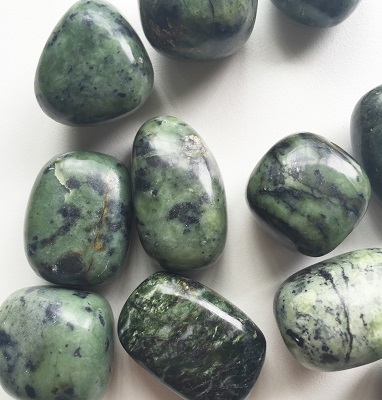
adjective
- of, characteristic of, or resembling a serpent, as in form or movement.
- having a winding course, as a road; sinuous.
- shrewd, wily, or cunning.
noun
- a device on a harquebus lock for holding the match.
- a cannon having any of various bore sizes, used from the 15th to the 17th century.
- Skating. a school figure made by skating two figure eights that share one loop.
verb (used without object), ser·pen·tined, ser·pen·tin·ing.
- to make or follow a winding course: The stream serpentines through the valley.
noun
- a common mineral, hydrous magnesium silicate, H2Mg3Si2O2, usually oily green and sometimes spotted, occurring in many varieties: used for architectural and decorative purposes.
adjective
- of, relating to, or resembling a serpent
- twisting; winding
noun
- maths a curve that is symmetric about the origin of and asymptotic to the x -axis
noun
- a dark green or brown mineral with a greasy or silky lustre, found in igneous and metamorphic rocks. It is used as an ornamental stone; and one variety (chrysotile) is known as asbestos. Composition: hydrated magnesium silicate. Formula: Mg 3 Si 2 O 5 (OH) 4 . Crystal structure: monoclinic
- any of a group of minerals having the general formula (Mg,Fe) 3 Si 2 O 5 (OH) 4
n.c.1400, “plant reputed to contain antivenom,” from Old French serpentin name of a precious stone, noun use of adjective meaning “of a snake, snake-like; sly, deceptive,” from Late Latin serpentius “of a serpent,” from Latin serpentem (nominative serpens) “snake” (see serpent). As the name of a greenish igneous rock consisting mainly of hydrous magnesium silicate, attested from early 15c. adj.“twisting, winding,” 1610s; see serpent + -ine (1). An earlier adjective meaning “having the evil qualities of a serpent” is recorded from late 14c., from the French source of serpentine (n.). The winding lake of that name in Hyde Park, London, was constructed in 1730.
- Any of a group of greenish, brownish, or yellowish monoclinic minerals, occurring in igneous or metamorphic rocks. They are used as a source of magnesium and asbestos. Chemical formula: (Mg,Fe)3Si2O5(OH)4.
 Liberal Dictionary English Dictionary
Liberal Dictionary English Dictionary